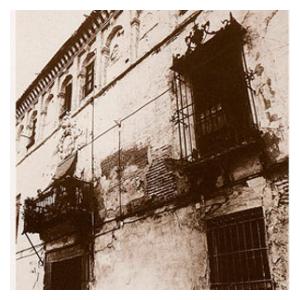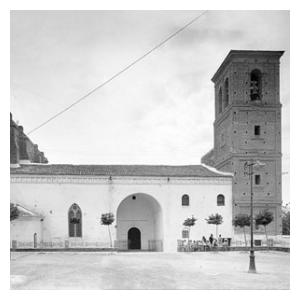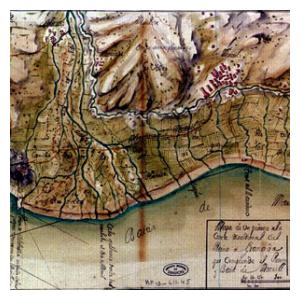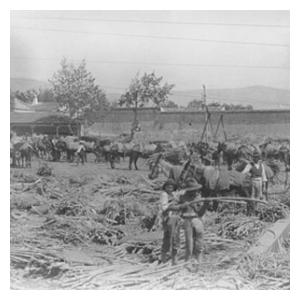Nestled on the fertile agricultural plain of the Guadalfeo River, Motril is a land of contrasts with six thousands years of history. On the one hand, it is a natural landscape with surrounding mountains at an average altitude of 1,000 metres (3,280.84 feet) that blend with the sea to offer you a unique visual experience. On the other hand, the areas of Calahonda and Sacratif Cape boast a beautiful sea that breaks gently on the very mountains in the middle of breathtaking sceneries with wonderful coves and an astonishing seafloor. Together with these two imposing landscapes, you will also find the well-known Vega of Motril. Therefore, it would be impossible to fully understand the history of Motril without mentioning its fertile agricultural plain where sugar cane has been grown for a thousand years. Moreover, the environmental and landscape implications of the town and the technological heritage present at the old manufacturing facilities are nowadays regarded as a great historical reference.
Documented evidence of the human being presence on the nearby Guadalfeo River first appeared at the heart of the Neolithic period (4th millennium B.C). The coastal plain was a large swamp with emerged areas covered with lush vegetation as well as navigable canals and dry land where several Neolithic, Punic and Roman settlements were established.
Between the 4th and 5th centuries, a phenomenon that historians named as “high mountains settlements” took place. It was a displacement of population from the coast to the high mountains where heavily fortified fences were built. This process was mainly influenced by the collapse of the Roman system and the resulting instability that exacerbated the insecurity of the region.

The military and administrative expansion fostered by the Caliphate of Cordoba during the 10th century as well as the ideal climate conditions of this area, made the river and coast areas experience a resurgence in the repopulation This fact led to the first important change of the landscape using new systems of irrigation techniques and plantations in terrace. According to the geographer al-Razi, the Guadalfeo delta was occupied by sugar cane fields and subtropical plants, leading to a system that broke with the strong seasonality of the agricultural tradition from Roman times.
In addition, the mining industry also played a significant role in the history of Motril dating back to the 11th century when, according to some reports, mining deposits were first mentioned. In fact, they refer to the area of the Cerro del Toro, an “atutia” mine related to the small rural village of la alquería of Batarna (Torrenueva) which shows a clear evidence of mine exploitation from the Chalcolithic age to the Middle Ages.

However, it was during the Nasrid Period when Motril assumed a greater importance in the agricultural plain of the Guadalfeo river. Probably, it was a small community with its economy originally based on irrigation systems created from the construction of an irrigation canal. This important hydraulic infrastructure came from a diversion dam or weir made of trunks and masonry in the area of Tajo de los Vados. From this place in direction S-SE, it passed through the agricultural plain of Pataura, Bates, Motril and Paterna where it finally ended.
During the Late Medieval Period, the construction of the irrigation canal and the new seeds imported from the Far East which were grown in lands owned by the Royal Nasrid family converted Motril into an area that gained more and more influence along the Tropical Coast. This trend would continue intensifying in 1489 with the conquest of Granada by the Catholic Monarchs since Motril was used as a safe place by the Mudejar population expelled from the surroundings.
Due to this historical event, during the 16th century, Motril became established as the main financial and administrative centre of the region (where the former mayor of the Coast of Granada lived) with an agriculture based on the harvest and manufacturing of the sugar cane as a single crop farming in the late third century; a reality that caused the detriment of other agricultural activities rooted in the Nasrid period like the silk. The riots and the war in 1569 caused the subsequent expulsion of the Moorish from Motril in 1570 and brought to an end a century of uneasy co-existence.
 In short, the 17th century was clearly marked by a period of prosperity until an outbreak of pestilence hit the town in 1679. At that time, the sugar cane manufacturing was the main pillar of the economy. The processes of harvesting, milling of the sugar canes and the commercialisation of the final product needed a large temporary workforce who came from other towns to gather in the crops. According to some sources “five or six thousand of the liveliest people from the region of Andalusia came”. The strong connection of Motril to the sugar can be found in the well-known verses written by the famous Spanish poet Francisco de Quevedo “… if sugar is referred to, Motril comes to the mind”.
In short, the 17th century was clearly marked by a period of prosperity until an outbreak of pestilence hit the town in 1679. At that time, the sugar cane manufacturing was the main pillar of the economy. The processes of harvesting, milling of the sugar canes and the commercialisation of the final product needed a large temporary workforce who came from other towns to gather in the crops. According to some sources “five or six thousand of the liveliest people from the region of Andalusia came”. The strong connection of Motril to the sugar can be found in the well-known verses written by the famous Spanish poet Francisco de Quevedo “… if sugar is referred to, Motril comes to the mind”.
Rapid urban development of the village was brought about in the midst of this hectic activity, an influence which can be seen in both religious and civil architectural heritage. Therefore, it was at that time when the main buildings of the town were built, although some of them were unfortunately destroyed. Among the civil buildings, we must highlight the Town Hall, the Comedy Royal House, the house of Mr. Alonso de Contreras or the most famous known as the house of the Inquisition located in the street of Marqués de Vistabella. As far as the religious architecture is concerned, the Encarnación church was remodelled by Ambrosio de Vico, by adding a classical style transept and the main chapel. Moreover, most of the churches, convents and hermitages were also built during this period.
In 1657 the King Philip IV recognised Motril as a city with the privilege of possessing weapons and the distinctive symbol of using the canopy. At the same time, it was definitely separated from the government of Granada from which Motril depended on since 1500.
During the change of dynasty in 1700, Motril also played a significant role when our local cardinal Cardenal Belluga supported the Bourbons and the town supplied troops and money. Thanks to these actions, Motril was recognised as a “Very Noble and Loyal” city by Philip V, a valuable honour that is still present in its coat of arms. After overcoming the crisis caused by the outbreak of pestilence in 1679, Motril had a recovery period in the 18th century thanks to the sugar industry which reached its worst level during this century due to external and internal factors. Various causes could be cited to explain this crisis: the deterioration of sugar cane quality, an oppressive taxation, the climate change and the competition by sugar cane imported from the American colonies. This resulted in the virtual disappearance of the sugar crops in the Vega in 1800 followed by the introduction of new crops such as rice and cotton as a request made by the Economic Society of Friends of the Country which was the best representative of the Enlightenment in our town. It was not until the mid-19th century that operations were resumed thanks to the introduction of steam-driven machines in industry, returning Motril to its position on the sugar capital with the creation of a new social class known as commercial bourgeoisie.
After overcoming the crisis caused by the outbreak of pestilence in 1679, Motril had a recovery period in the 18th century thanks to the sugar industry which reached its worst level during this century due to external and internal factors. Various causes could be cited to explain this crisis: the deterioration of sugar cane quality, an oppressive taxation, the climate change and the competition by sugar cane imported from the American colonies. This resulted in the virtual disappearance of the sugar crops in the Vega in 1800 followed by the introduction of new crops such as rice and cotton as a request made by the Economic Society of Friends of the Country which was the best representative of the Enlightenment in our town. It was not until the mid-19th century that operations were resumed thanks to the introduction of steam-driven machines in industry, returning Motril to its position on the sugar capital with the creation of a new social class known as commercial bourgeoisie.
 In spite of the general wretchedness after the Independence War, there was a reason to hope: the cotton harvest. This newly commercial activity began in the Bay of Cadiz and Barcelona due to the wartime situation which caused the termination of the business relationships between the American and Mediterranean markets by the end of the 18th century. However, the prosperity of this industry lasted a brief period of time which was profitable for the Catalonians entrepreneurs during the highest production level but damaging for workers since this type of crop did not require the same number of workforce as the sugar cane did. Moreover, in 1841, this industry had to face the collapse of the tariff protection which allowed the emergence of the international cotton production in our country. It was probably a combination of all of them that led to the ending of this single crop farming in 1846 along the Coast.
In spite of the general wretchedness after the Independence War, there was a reason to hope: the cotton harvest. This newly commercial activity began in the Bay of Cadiz and Barcelona due to the wartime situation which caused the termination of the business relationships between the American and Mediterranean markets by the end of the 18th century. However, the prosperity of this industry lasted a brief period of time which was profitable for the Catalonians entrepreneurs during the highest production level but damaging for workers since this type of crop did not require the same number of workforce as the sugar cane did. Moreover, in 1841, this industry had to face the collapse of the tariff protection which allowed the emergence of the international cotton production in our country. It was probably a combination of all of them that led to the ending of this single crop farming in 1846 along the Coast.
It was then when different favourable circumstances arose and let the traditional sugar cane techniques to update by replacing the pre-industrial mills with modern sugar factories. The confiscations carried out in 1835 and 1855 benefited a new social bourgeoisie class who took advantage of different factors like the introduction of a new variety of sugar cane called Otahití, the tariff policy that was propitious to the sugar production in the country and the new advanced techniques such as the steam used as motive power in the mills, the boiling and in a vacuum evaporation processes as well as the turbines for purging or the division of the sugar and the sugar molasses.

At the beginning of the 20th century, the sugar cane was converted into a minor production with a significant and widespread local presence, subject to different ups and downs and gradually disappearing from the 70s. However, in the mids-19th century, farmers began to grow the first subtropical crops with custard apple, avocado and mango trees in the vegetable gardens of the Vega, replacing the traditional fruit trees in response to the sugar industry crisis by plantations in terrace and hillsides thanks to the development of the irrigation systems.
During the 60s, the construction of the paper factory locally known as Celulosa, the new state schools and the high level of the building sector led to the growth of the economy. From the 70s, this fact placed Motril at the forefront in terms of administrative, agriculture and commercial sectors.
At the beginning of the 21st century, Motril became the second largest city in Granada after the capital and it is the main town of the region with more than 120,000 inhabitants. Besides, it is a high potential city which gradually tackled the burden posed by its geographical isolation. In recent years, Motril has witnessed a strong socioeconomic change associated with agriculture and service sector as well as a clear commitment to tourism, based mainly on the low density of buildings and the preservation of the environmental quality along with different museums that show the most important heritage marked by our sugar traditions (Pre-industrial Sugar Museum and the Industrial Museum found in Ntra. Sra. Del Pilar Sugar Factory).
